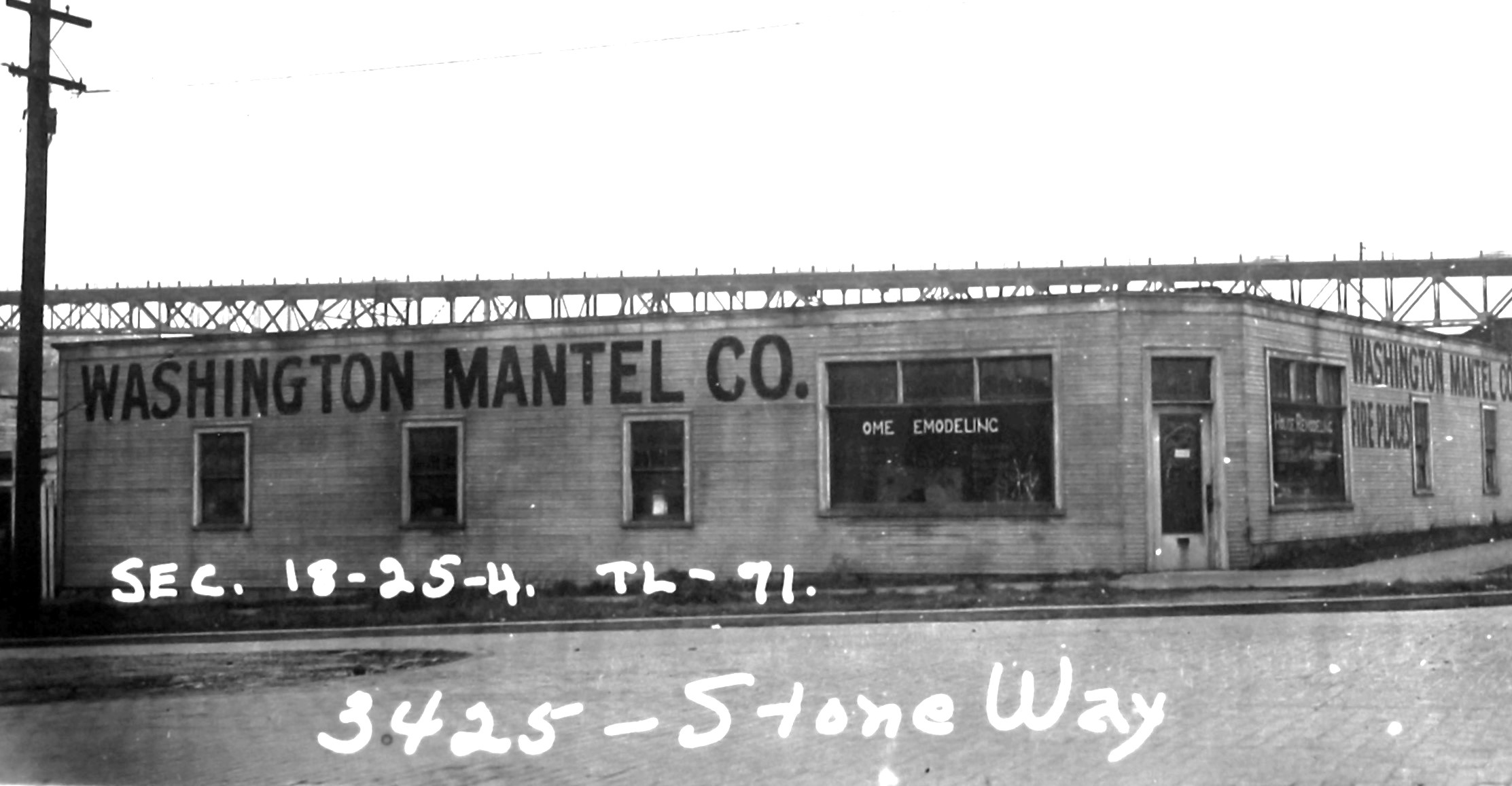Beginning in the 1920s, Stone Way in Fremont was lined with many construction-related companies. There were suppliers of brick & tile, carpentry, cement work, electricians, painting, plaster & stucco, and flooring contractors.
In 1925 with co-investors, Frank Ostermeyer opened the Washington Mantel Company at 3425 Stone Way. The designation of “mantels” (the shelf above a fireplace) was not inclusive of every kind of work the company did. Over the years the company also dealt in brick, tile and stucco materials as well as their original business, slabs of marble or granite which were used for smaller installations such as fireplace mantels. The “secret” to their supply of materials was that the building was owned by the Braida family, workers in art mosaic, marble, granite and terrazzo, who lived back-to-back with the Washington Mantel building.
The Braida house at 3408 Woodland Park Avenue is one of only a few residences in Fremont which have been historically landmarked. The house started out in 1901 as a one-story structure. John Braida bought the house in 1915 and had it raised up so that the ground floor became his workshop, and the original house, now on the second floor, was the Braida family residence. Braida was an influential worker in the prosperous building boom of the 1920s in Seattle. One of his well-known works is the elephant which is at 8800 Aurora Avenue, at the Aurora Rents business (formerly the Aurora Flower Shop).
Franklyn Peter Ostermeyer was born in 1899 in Pleasant Hill, Missouri, where his German immigrant grandparents had settled in the 1870s. After Frank was born, his parents began a western migration. Along the way, Frank’s sister was born in Colorado. The family settled in Tacoma, Washington, in the early 1900s where Frank’s father worked at the shipyard.
By the time Frank was 25 years old both of his parents were deceased. Frank married and the couple moved to Seattle where Frank started working at Washington Mantel Company in 1925. Work went well until the onset of the economic depression of the 1930s, when work became hard to find. When people don’t have money, the construction industry comes to a near standstill. During the 1930s Frank Ostermeyer added several sidelines, such as a stucco manufacturing, and he also became an installer for sawdust burners, a kind of stove for heating with sawdust. In 1938 the name of Frank Ostermeyer appeared along with others in a newspaper ad for “guaranteed” good workmen.
We may say that working with brick, marble, stone & tile needs an artistic application. In his sixties, Frank Overmeyer became a noted artist of oil paintings, with exhibits in local galleries. His son Denis became an art instructor at Shoreline Community College.
In 1973 the former Washington Mantel building at the southwest corner of 35th & Stone Way was transformed into the workspace of a maker of custom-built bicycles.
Sources:
Braida house, 3408 Woodland Park Avenue on the Seattle Historical Sites Index.
Fremont’s Elephants including the 8800 Aurora Avenue North sign at Aurora Rents.
Genealogical and newspaper references.
Robinson Tile & Marble Company: John Braida worked together with this company.
Seattle Post-Intelligencer, May 28, 1938, page 17, advertisement for workmen: brick & tile, carpenters, cement work, electrician, painting, plastering & stucco. Frank Overmeyer was listed as a “guaranteed good worker” in brick & tile.

